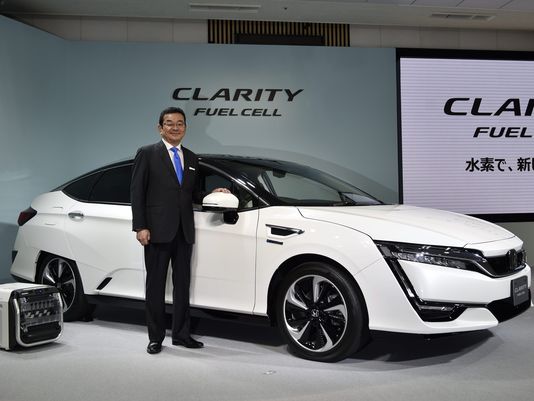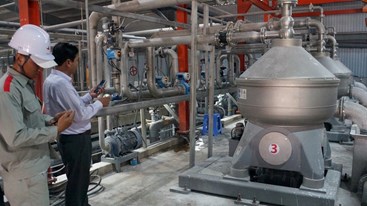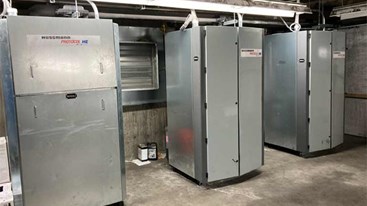Thursday, 08/01/2026 | 01:07 GMT+7
Honda said it expects its new Clarity Fuel Cell will be rated at a driving range in excess of 300 miles by the U.S. EPA with a refueling time of approximately three to five minutes.
Honda also said it expects its Clarity Plug-In car will be able to go 40 miles on a single charge before switching to a gasoline engine. That would be nearly twice the range of the Prius Prime, a plug-in hybrid that Toyota unveiled in March at the New York Auto Show.
The new lineup of Clarity vehicles, along with a new Accord Hybrid that will go on sale this spring, are part of Honda CEO Takahiro Hachigo's goal of dramatically boosting the volume of electric and alternative-powertrain vehicles over the next 15 years.
By 2030, Hachigo said Honda is hoping that two out of every three vehicles it sells will be either a hybrid, plug-in hybrid, battery electric car, or hydrogen fuel cell vehicle.
It is an ambitious goal for Honda, an automaker that has been both a pioneer of hybrid vehicles and has also struggled to develop a hybrid nameplate that resonates with Americans.
Currently, only about 5% of Honda's global sales come from hybrids, according to HybridCars.com.
Mendel said Honda is poised to achieve the goal because it now has the right technology and strategy in place.
"(The Clarity) is developed, frankly, in line with all of our global development for the first time. Its not taking an existing model and trying to retrofit (compressed natural gas) or something to it," Mendel said. "So the confidence comes from ...moving the development of this vehicle series into our mainstream development cycle."
Still, Honda's history with hybrids is rocky – especially when compared with Japanese rival Toyota.

Honda broke new ground with the first gasoline-electric hybrid car sold in America in 1999 when it introduced the Insight gas-electric hybrid shortly before Toyota introduced its Prius hybrid. The Insight was aerodynamic and innovative. But it also was a futuristic looking pillbox that many considered ugly. It was discontinued in 2006.
Honda revived the Insight name in 2010 with a hybrid designed to undercut the Prius with a lower price. But it also was smaller and less powerful than the Prius and was discontinued in 2014. Honda also discontinued its Civic Hybrid last year.
Meanwhile, the Prius has been a global success story with more than 8 million sold.
Honda's ambitious plans for hybrid and fuel cell vehicles also comes amid a two-year decline sales of all hybrids. Sales of all hybrid vehicles in the U.S. fell more than 15% to 384,404 as gas prices hit their lowest prices in a decade, according to HybridCars.com.
"Fuel prices won't stay low forever. It's just not going to. It's a long haul," Mendel said. "And these are not just compact cars anymore. They are not a micro-based, or mini-based car. You can put five people in and go anywhere you want."
Linh Mai (usatoday.com)








 Webinar 2: “Financial Support for Energy Efficiency Enterprises – Opportunities and Challenges”
Webinar 2: “Financial Support for Energy Efficiency Enterprises – Opportunities and Challenges”
 Vietnamese enterprises achieve green growth and cut costs through energy efficiency
Vietnamese enterprises achieve green growth and cut costs through energy efficiency
 Capacity building for participating financial institutions in Ho Chi Minh City
Capacity building for participating financial institutions in Ho Chi Minh City
 Strengthening capacity for energy management officers of local government agencies
Strengthening capacity for energy management officers of local government agencies
 Strengthening Sales and Marketing Capacity for Energy Efficiency Equipment and Solution Suppliers
Strengthening Sales and Marketing Capacity for Energy Efficiency Equipment and Solution Suppliers
 Steel Enterprises Saving Energy and Enhancing Competitiveness
Steel Enterprises Saving Energy and Enhancing Competitiveness
 Capacity Building for Energy Officers of Government Agencies in the Central region
Capacity Building for Energy Officers of Government Agencies in the Central region